All issues

Volume 91, Issue 10
Displaying 1-2 of 2 articles from this issue
- |<
- <
- 1
- >
- >|
-
Sadahiko ITOH, Nobuki NAKAYAMA2022Volume 91Issue 10 Pages 2-15
Published: October 01, 2022
Released on J-STAGE: October 01, 2023
JOURNAL FREE ACCESSWhile Japan’s water tariff will inevitably increase in the future, the increase needs to be implemented smoothly taking sufficient communication with citizens. A previous study has found that the citizens’ evaluation of the current water tariff has the strongest impact on the acceptance of water tariff increase. In this study, the effects of improving the evaluation on water tariff and the acceptance of water tariff increase were analyzed by providing citizens with eight kinds of information relevant to water supply. It was demonstrated that the information on a comparison with the price of bottled water, a comparison with other rates, self-supporting system, the impact on the environment, and progressive water rates system improved the evaluation on current water tariff. In addition, it was shown that the information on the impact on the environment and self-supporting system improved the acceptance of water tariff increase.View full abstractDownload PDF (27582K)
-
Fumie ADACHI, Jin YOSHIDA, Naoshi YOSHIDA, Tadao TANIGUCHI, Tomoyo TAK ...2022Volume 91Issue 10 Pages 16-24
Published: October 01, 2022
Released on J-STAGE: October 01, 2023
JOURNAL FREE ACCESSOsaka prefectural government has been conducting external quality assessments on the analytical measures for tap water since 1993, collaborated with water supply utilities, public health centers and public health institutes. “Standard plate count”, which is one of the bacteria test items in the water quality standards, has not been selected as a target because the protocol of quality assessment has not been clearly defined nor established. In this study, a demonstration experiment was conducted with the cooperation of 32 institutions to establish the protocol of external quality assessment of “standard plate count” using standard samples. Various evaluation methods were compared for proper assessment of the test results. The result showed that our method is proper for preparing a standard sample for external quality assessment. Furthermore, the combined use of X bar - R charts and Z-score was helpful as an evaluation method at present, and the calculation method of Z-score should be determined by accumulating data in the future.View full abstractDownload PDF (17940K)
- |<
- <
- 1
- >
- >|